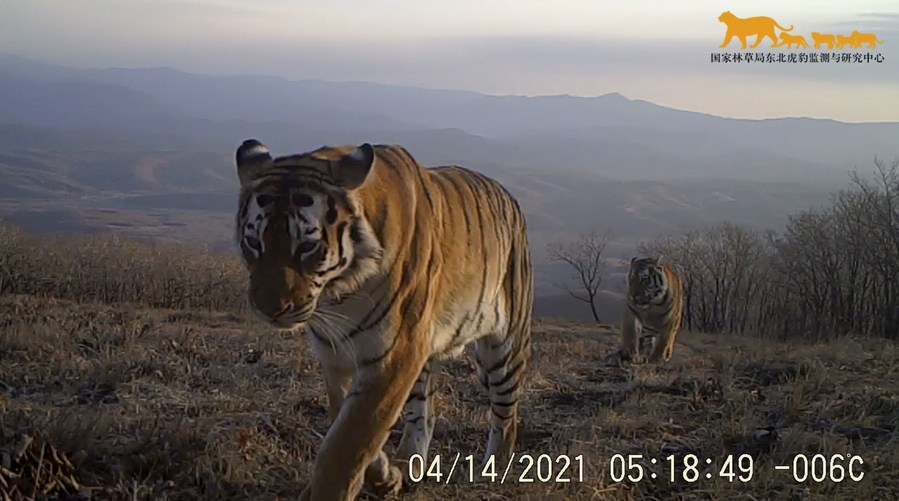
Photo taken with a monitoring camera shows a wild Siberian tiger in the Northeast China Tiger and Leopard National Park in northeast China, April 14, 2021. (Xinhua)
BEIJING, Aug. 8 (Xinhua) -- Chinese paleontologists identified an extinct and deeply divergent tiger lineage from a fossil found in northeastern China, revealing a more complex evolutionary picture of the big cats.
The researchers from Wuhan-based China University of Geosciences found that the ancient lineage diverged from modern tigers approximately 268,000 years ago. More than twice the known age of modern tigers' maternal ancestor, living around 125,000 years ago.
A tiger mandible was collected from Da'an karst cave in northeastern China's Jilin Province. Hyena fossils were also found in the cave. Da'an karst cave lies in the historical distribution range of tigers and the current habitat of Amur tigers.
The analysis on its residual DNA showed that the jawbone belonged, not to hyenas, but an individual tiger of unknown lineage. It dates back to more than 43,500 years ago, according to the study published recently in the Proceedings of The Royal Society B.
The researchers managed to recover both mitochondrial and nuclear genome data of the fossil to display the ancient tiger's maternal and patrilineal history.
The researchers said that fossils of cave lions were also recorded in nearby regions although it's still not clear whether they ever coexisted with the newly-identified predator, a distant cousin of modern tigers.
But the geographical overlap between two top predators, which prefer highly distinct habitats, still seems unlikely, according to the study.
The study brings a new insight into tigers' evolutionary history prior to their recent radiation and highlights the genetic antiquity of fossil tigers in China, said the researchers. ■









